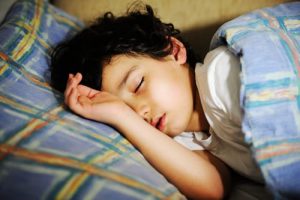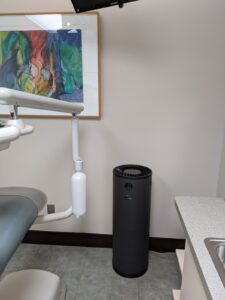 Sleep apnea – a sleep disorder that causes breathing cessations throughout the sleep cycle – is often diagnosed in adults. Even then, though, because the symptoms often occur when the sufferer is unconscious, many cases of sleep apnea go undiagnosed (or misdiagnosed). Many people assume that because the risk for sleep disorders increases with age, children don’t suffer from them. However, this is far from true – children can suffer from them, such as obstructive sleep apnea (OSA). In fact, it creates the same risks for health complications if left untreated and can be just as difficult to diagnose as it is in adults.
Sleep apnea – a sleep disorder that causes breathing cessations throughout the sleep cycle – is often diagnosed in adults. Even then, though, because the symptoms often occur when the sufferer is unconscious, many cases of sleep apnea go undiagnosed (or misdiagnosed). Many people assume that because the risk for sleep disorders increases with age, children don’t suffer from them. However, this is far from true – children can suffer from them, such as obstructive sleep apnea (OSA). In fact, it creates the same risks for health complications if left untreated and can be just as difficult to diagnose as it is in adults.
Are The Symptoms The Same In Children?
Some symptoms – like snoring, for example – may exhibit in children just as they would in adults. Often times, loud and disruptive snoring is the most recognized symptom of sleep apnea – although there are several others that go unnoticed. A child having behavioral problems in school or socially, or suffering from daytime fatigue, may actually be suffering from a sleep disorder. Without sleep, children may have difficulty paying attention – which can also point to attention disorders (like ADHD). Similarly to sleep disorders in adults, many of the daytime symptoms that a child experiences associated with their sleep apnea indicate other medical conditions.
What Causes Sleep Apnea In Children?
Unlike adults where obesity is one of the most common causes of OSA, it’s actually much less common for kids. In children, the most common cause for sleep apnea is large tonsils or adenoids. Sometimes, these grow to be large (in comparison to the airway) and can cause blockage when a child is laying down.
When Should Your Child Visit The Doctor?
If you notice any of the above symptoms while your child is asleep, it’s a good idea to schedule a doctor’s appointment. However, if you are unable to witness these symptoms, look for signs of irritability, hyperactivity, and excessive sleepiness during the day – these may indicate a sleep disorder.






